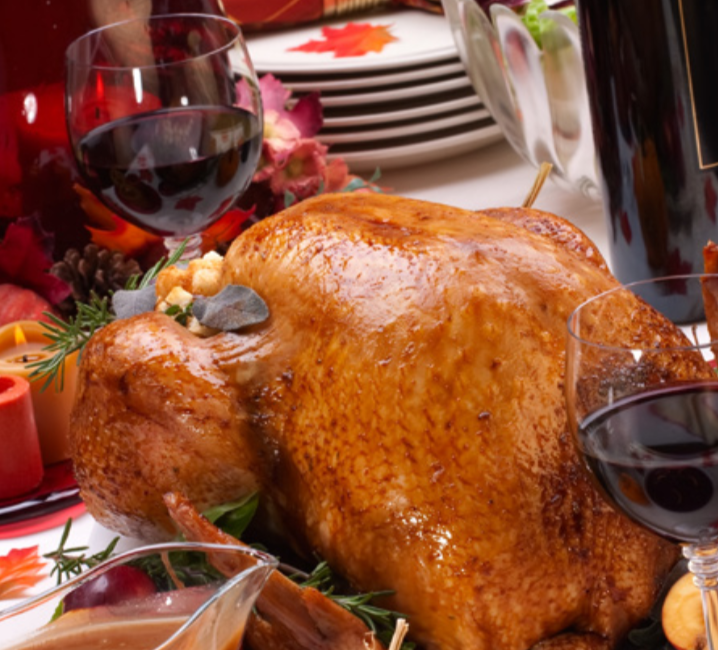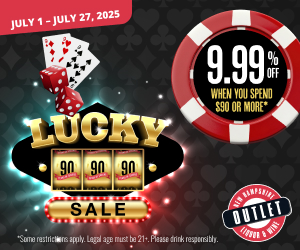Here we go again! The holidays are upon us and this makes me want to DANCE LIKE MICHAEL JACKSON! Mic drop…
Okay, maybe not, but I do enjoy the festive moments the holidays bring and think the key to success lies in preparation. A little thought and planning before the big days goes a long way towards not burning up grey matter in our collective prefrontal cortex. However — and to address the elephant in the room — what about picking the right wines? No worries folks. We’ve got this.
Without trying to sound like some kind of Hallmark sentiment, picking the right wines is as easy as picking the wines you like. That said, if you are of mind to try to push further in your culinary and wine pursuits, we can take that journey together. Matching food with wine is not rocket science if you try following a few very basic steps.
Match light wines with light dishes. You know a salad or a simple appetizer is light food. You also probably know full-bodied red Bordeaux and Napa Cabernets are NOT light wines. You can pretty much guess the right wine for a dish if you have a sense of the body of the food. Roast chicken? Probably medium body right? Match with a medium-bodied wine. Think Pinot Noir here or a full-bodied Chardonnay if you want white. Grilled rib-eye steak? Full bodied food. Grab a big Napa Cab or Bordeaux and you can’t go wrong.
Price is an indicator of both quality and complexity. If you are spending $30,000 for a new car, you are probably getting more car than if you were buying one for $10,000. That doesn’t mean you won’t like the less expensive car better though. People broadcast at their own frequencies. You will ultimately decide what is right for you, but price is at least an indicator of the quality you should expect. The same is true for wine. A $10 bottle of wine that says it is from “California” will likely be far less complex than a $30 bottle from “Napa Valley.” Why? Like any commercial product, wines are designed for a certain price echelon and with a specific demographic of customers in mind. You have to then decide what you like. Simple, complex or somewhere in-between.
Rule of thumb for matching wines to cheese: the alcohol level in the wine is a very important component to arrive at the best pairings. Wines under 12% alcohol are simpler wines more suited to simple cheeses. Wines over 14% will be more complex and therefore better matches with more complex cheese (and food in general for that matter). As another rule of thumb, white wines generally are better with light- to medium-bodied cheese while reds are usually best with strong, hard aged cheese.
Back to food: If you take the time to prepare a stunning meal for your guests and then pair it with the cheapest wine you can find, not knowing if you even like it, it would be like giving a child a great toy at Christmas but not including the batteries. Cooking with wine? If you wouldn’t drink it on its own, I would suggest you don’t put it in your food.
Following are some examples for you to use as a reference:
LIGHT FOODS: simple salads, light appetizers, shellfish (excluding lobster), simple whitefish
White wines to match: New Zealand Sauvignon Blanc, Pinot Grigio, Italian Gavi, Vermentino, Arnieis
Cheese: d’Affinois, simple cheddar, mozzarella, Monterey Jack
MEDIUM-BODIED FOODS: roast chicken and vegetables, grilled pork chops, salmon, tuna, pork tenderloin, roast turkey with all the fixings, light pasta dishes like spaghetti in red sauce, lobster with butter
White wines to match: French Sancerre and Pouilly-Fumé (Sauvignon Blanc), Alsace Riesling and Pinot Blanc, Italian estate Chardonnay, Viognier, Napa Or Sonoma Chardonnay, Washington State Chardonnay, white Bordeaux, German Riesling
Red wines to match: Pinot Noir, red Burgundy (Pinot Noir) Chianti, Chianti Classico, Rioja, Merlot under 14% alcohol, Côtes du Rhône, Zinfandel under 14% alcohol, Chinon, New York State Cabernet Franc, Cru Beaujolais
Cheese: Fontina Val d’Aosta, manchego, swiss, Chevre (goat) Racine, taleggio, gruyère, ricotta,
FULL-BODIED FOODS: roast beef (standing rib roast), grilled porterhouse, New York strip, braised beef short ribs, veal chops, lamb chops, roasted leg of lamb, heavy pasta dishes with lots of cheese
Red wines to match: red Bordeaux, Napa/ Sonoma Cabernets, northern Rhône, Château- neuf du Pape, Gigondas, Vacqueyras, Brunello di Montalcino, Super Tuscans, Chianti Classico Riserva and Gran Selezione, Priorat, Rioja Gran Reserva, Zinfandel over 14% alcohol
Cheeses to match: Parmigiano-Reggiano, aged gouda, aged cheddar, Piave
DESSERTS:
Sauternes or white dessert wines with:
blue cheese, tarte tatin (apple pie), pear tart, lemon tart, almond torte — does not taste good with chocolate
Vintage or Ruby Port with: blue cheese, aged hard cheeses, dark chocolate, dates and figs
10, 20 or 30-year Tawny Port with: blue cheese, caramel/butterscotch desserts, crème brûlée, milk chocolate desserts, hazelnuts
Hopefully, this mini tutorial helps you find your way through important holiday gatherings. Food and wine can seem really complex and actually is depending on how far you want to take it. Think of this: a pizza is a circle cut into triangles, fit into a square…now that’s deep. Deep as a puddle. Cheers, and happy holidays!
Written for Celebrate by Gordon Heins, Wine Expert for New Hampshire Liquor Commission.

